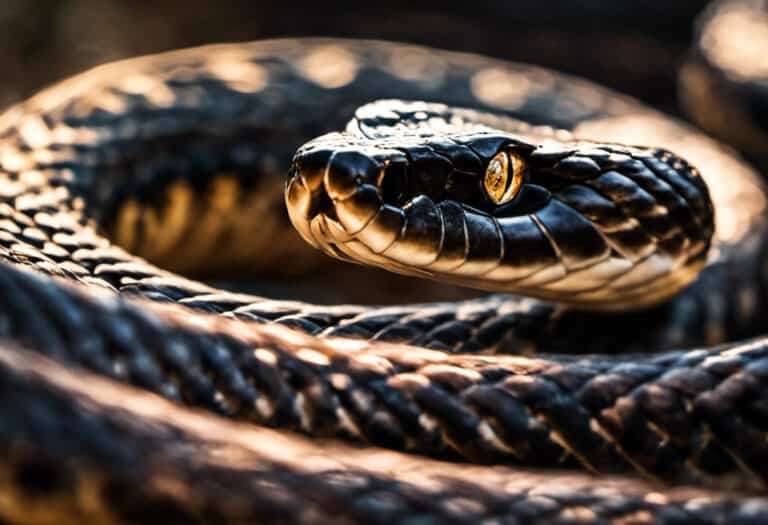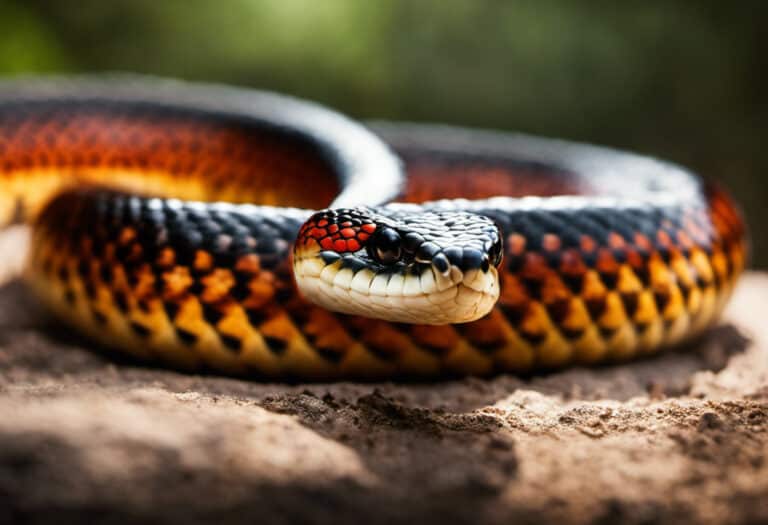Can Snakes swim? 12 Amazing Facts You Didn’t know
It is true that some snakes, such as the water snake and the boa constrictor, spend a good deal of time swimming in the wild.
But for most other species, does this mean that they can swim or not?
The answer is not clear-cut.
While certain species are excellent swimmers, others are not so good at it. There are even some that have never been seen swimming or don’t know how to swim.
Snakes don’t have fish buoyancy, and they lack the muscular power to propel themselves through the water.
If a snake falls into deep enough water, it will survive, even if unable to swim to safety.
1) Can any snake swim?
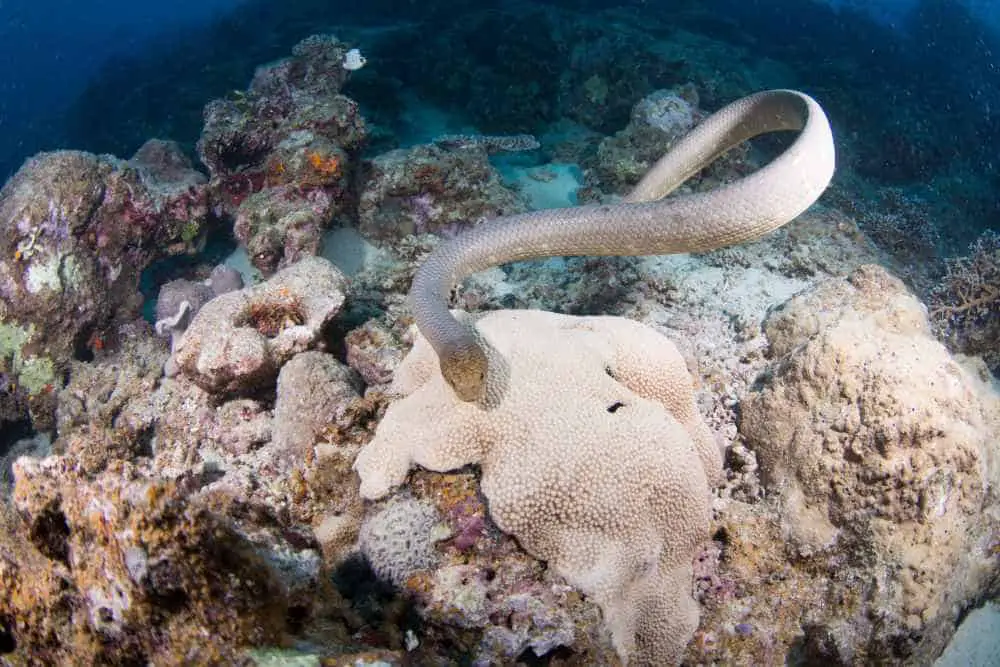
Most snakes can swim, and many spend a lot of time in the water.
Snakes breathe air, so they must go to the water to stay wet, or they will eventually dry out and suffocate.
However, not all snakes can swim well enough to catch fish or move quickly through the water. Some live around the edges of rivers and lakes but only swim when they must.
Most snakes can swim, but there are a few exceptions:
The water cobra and the red spitting cobra of Africa do not swim. They live in dry areas where they don’t have access to large bodies of water, so they never need the ability to swim.
These two cobras can also spit venom into the eyes of their attackers, so they don’t have to go near their enemies.
The most famous swimming snake is probably the Anaconda. Anacondas live in or around water in South America.
2) Can a snake drown?
Not exactly, but close enough.
The term “drowning” refers to suffocation by submersion in liquid: the victim’s respiratory system shuts down due to the lack of oxygen.
It doesn’t matter whether air is available or not. Once the body is submerged, it will die in minutes without assistance.
A drowning person may struggle frantically underwater because his body reflexively reacts to stimuli other than oxygen deprivation, which might lead him to gasp for air even if none is available.
A drowning snake won’t drown, but it’ll die if left underwater for a sufficient time.
3) How fast can snakes swim?
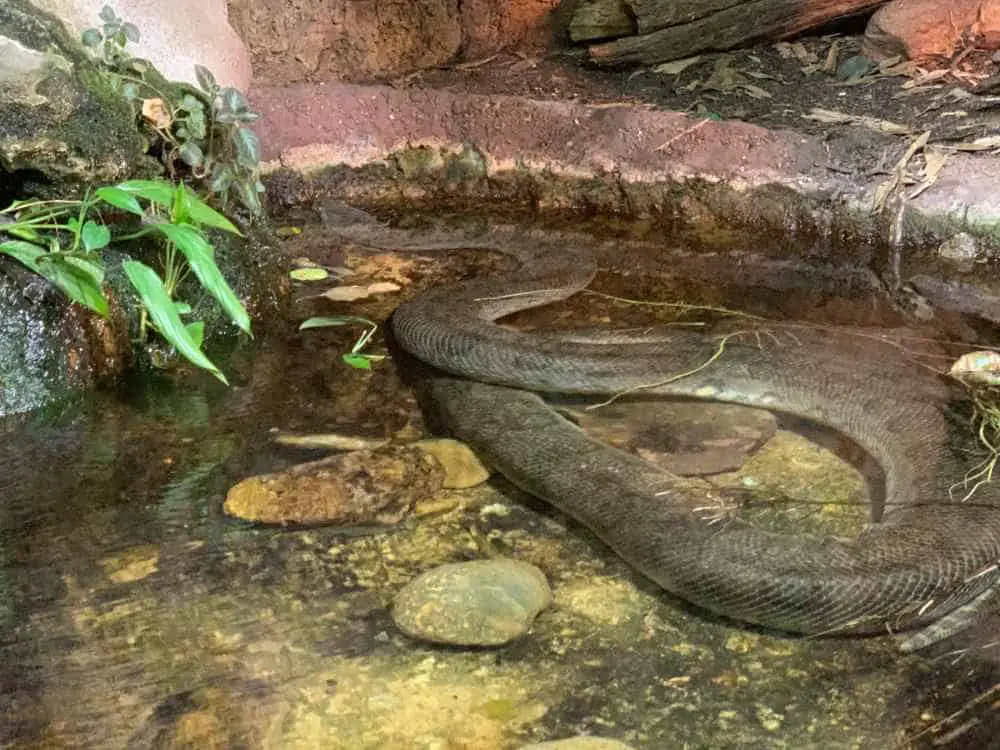
- Anaconda is the world’s heaviest snake found in South America; it can swim at a speed of 10 miles/hour (16 kph).
- Python is the longest snake found in Asia; it can swim at 1 miles/hour (1,6 kph).
- The average swimming speed of all snakes is 1.6–6.7 miles/hour (2.6–10.8 km/h) depending upon species, age, size, etc.
4) How do they swim?
Snakes propel themselves inside water by moving their entire body from side to side. Some use just a part of their body, while others use their whole length, aquatic or land-based.
The movement generates both force and motion, allowing them to go forward until they reach the required speed.
5) Can Snakes swim in both saltwater and freshwater?
Sea snakes are the only ones that swim in saltwater. Other snake species usually inhabit freshwater bodies of water like streams, rivers, ponds, etc.
Some others can survive in both fresh and saltwater, but they cannot swim happily in either case. They get overwhelmed when exposed to saltwater and end up drowning if forced to do so.
6) How far can snakes swim?
Snakes can swim long distances. The yellow-bellied sea snake can swim at 15 to 32 cm/second (0.336 – 0.715 mph) on average but will only go about 2-4 centimeters per second underwater, making them fast for their size!
Pythons and anacondas are potent swimmers, and they not only can cross rivers but can also live in them.
While crocodiles are also known to live in rivers, they often snatch pythons and anacondas while swimming, making the snakes their prey.
7) Do snakes like water?
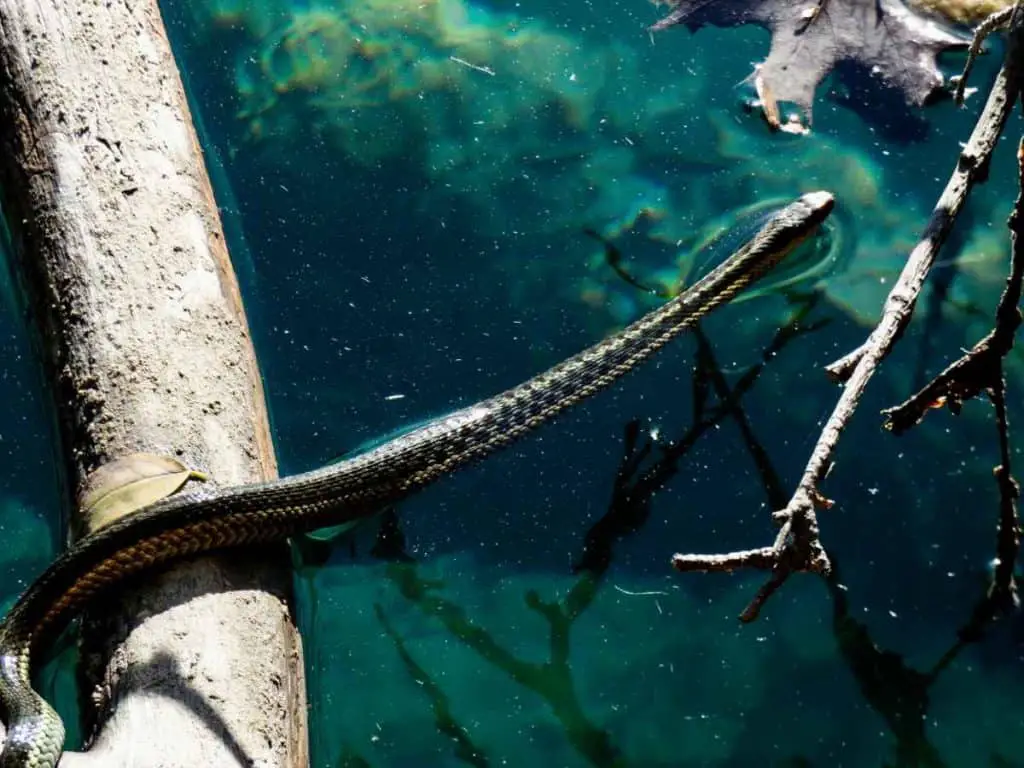
Not all species of snake-like water. Some, like the garter snake, would rather stay on land. Others, such as the yellow belly water snake or green tree python, actually love spending time in and around the water.
However, most snakes will avoid getting wet, but that does not mean they won’t swim when necessary.
8) Can snake swim upstream?
Snakes can swim upriver, but it would be tough for them because they are cold-blooded creatures.
The temperature of the water plays a significant role in whether or not a snake can swim upstream or not. It is harder for them to swim against the current, and most snakes will avoid rivers altogether.
9) Can a snake swim underwater?
There is some evidence that snakes can stay underwater for as long as a few minutes, but it depends on the type of snake involved.
Some water pythons and anacondas have been known to hold their breath for 10 minutes. Still, it would be hazardous to extrapolate these figures and make generalizations about all species.
10) Can snakes swim in big rivers?
Snakes can swim in large and deep bodies of water. It is dangerous for most snakes to be too far away from their usual landscape, but if they happen to find themselves in a river or lake, it may not be so easy to get out.
They would need to reach the surface every now and again to breathe or crawl up the river bank to get out. In such cases, what they would do depends on how threatening their surroundings are and whether they can find an escape route away from the water.
11) How deep can a snake swim?
Snakes can swim in water that is too deep for them to stand. A snake’s ability to swim depends on its age and size, but some types of snakes can swim even if they are young.
Even a baby anaconda is capable of hunting frogs while swimming underwater during their early days. The more developed the muscles get, the better the snake’s swimming becomes.
The sea snake is a fearless swimmer that can dive up to 250 meters underwater.
12) What makes snakes swim faster?
If a snake is motivated to move away from something or towards something, it can swim faster and more efficiently.
If it wants to get to another place quickly, whether due to danger or because it has discovered an easy-to-catch prey at its destination, it will swim faster.
A snake will also attempt to go faster if it senses an imminent danger or wants to escape from something that has already caught up with it.
FAQ:
What Can Species Of Snakes Swim?
Snakes that commonly enjoy the water and can swim include:
- Anacondas
- Pythons
- Water Snakes (non-poisonous)
- Milk Snakes
- Rat Snakes
What Can Species Of Snakes not Swim?
Some snakes cannot swim, such as:
- Water Moccasins (poisonous)
- Coral Snakes (poisonous)
- Cobras
